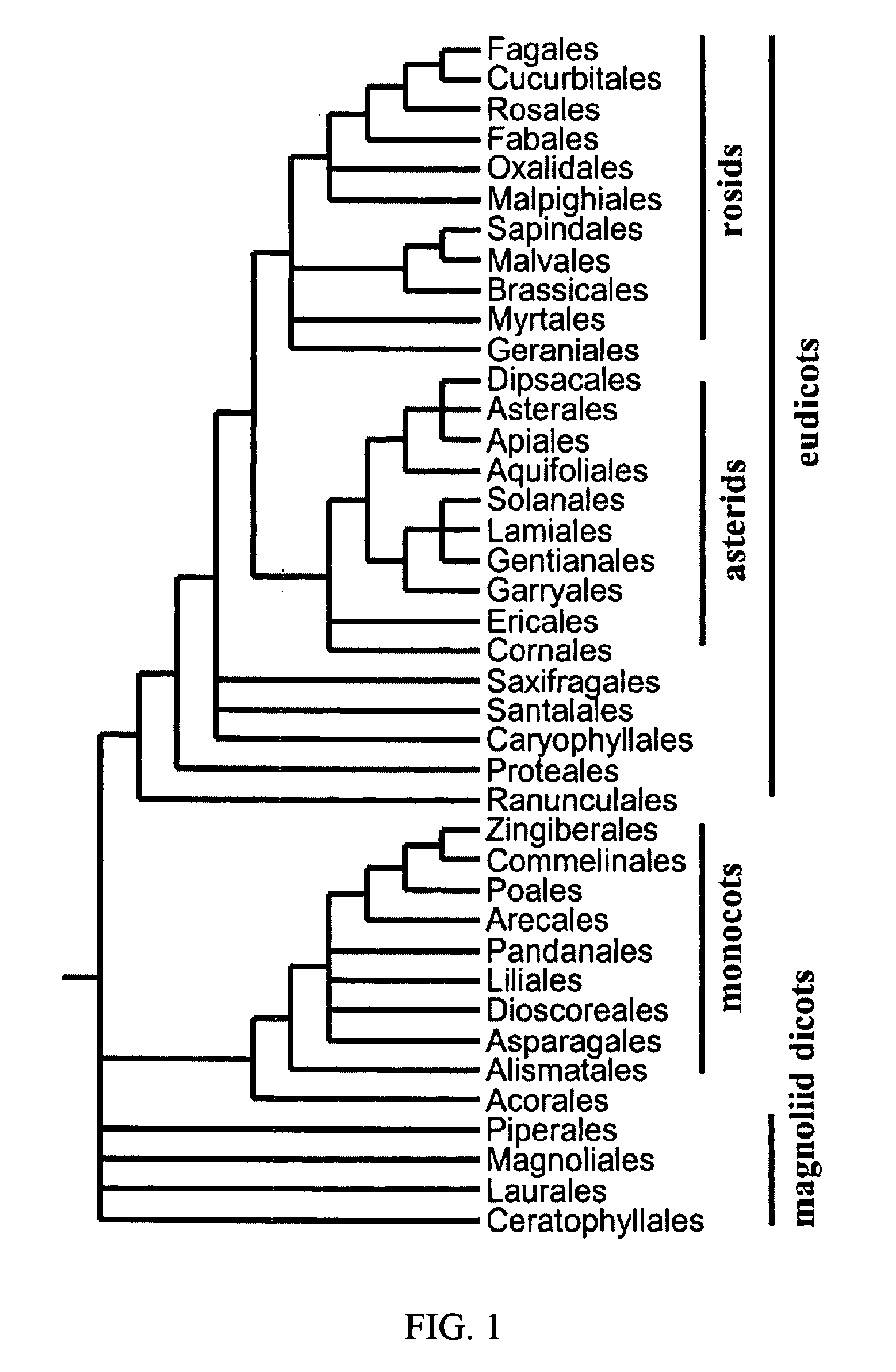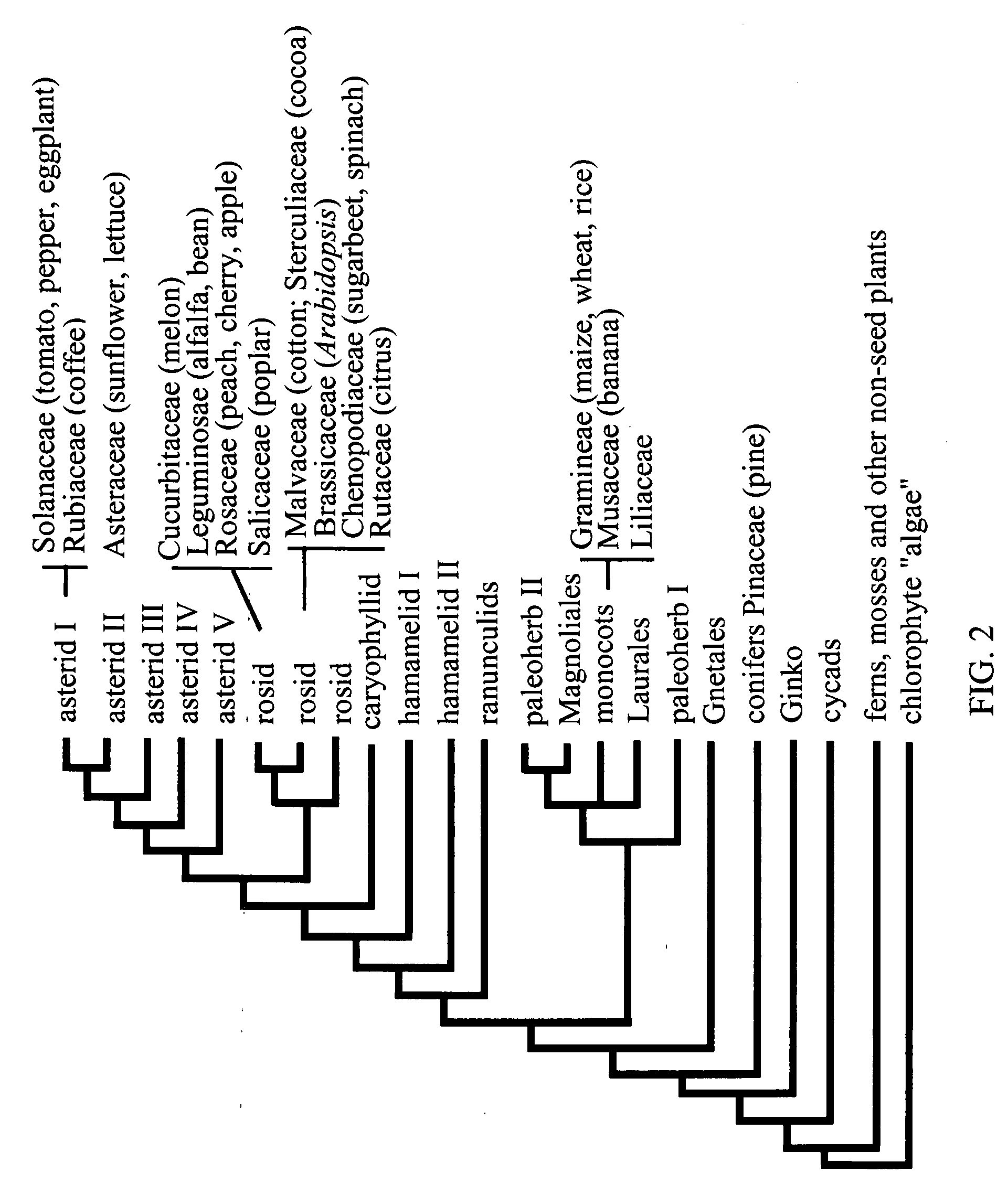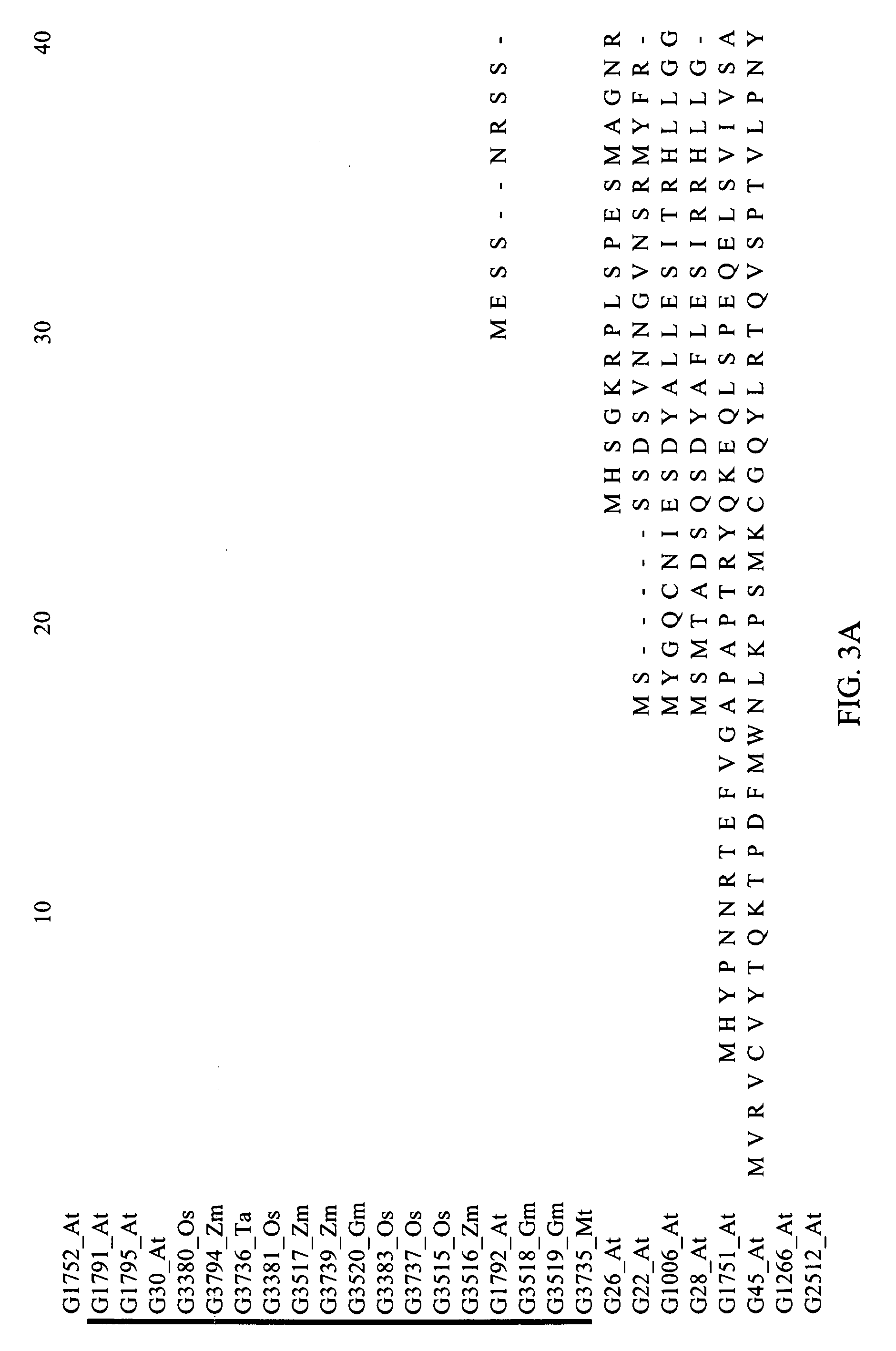Conferring biotic and abiotic stress tolerance in plants
a technology of plants, applied in the field of conferring biotic and abiotic stress tolerance in plants, can solve the problems of increasing the susceptibility to disease and pests, increasing the risk of bacterial infection, and reducing the growth of plants, so as to achieve the effect of increasing the tolerance of plants
- Summary
- Abstract
- Description
- Claims
- Application Information
AI Technical Summary
Benefits of technology
Problems solved by technology
Method used
Image
Examples
examples
[0205]This invention is not limited to the particular devices, machines, materials and methods described. Although particular embodiments are described, equivalent embodiments may be used to practice the invention. The examples below are provided to enable the subject invention and are not included for the purpose of limiting the invention.
[0206]The invention being generally described will be more readily understood by reference to the following examples, which are included merely for purposes of illustration of certain aspects and embodiments of the present invention and are not intended to limit the invention. It will be recognized by one of skill in the art that a transcription factor associated with a particular first trait may also be associated with at least one other, unrelated and inherent second trait which was not predicted by the first trait.
example i
Full Length Gene Identification and Cloning
[0207]Arabidopsis transcription factor clones used in these studies were made in one of three ways: isolation from a library, amplification from cDNA, or amplification from genomic DNA. The ends of the Arabidopsis transcription factor coding sequences were generally confirmed by RACE PCR or by comparison with public cDNA sequences before cloning.
[0208]Putative transcription factor sequences (genomic or ESTs) related to known transcription factors were identified in the Arabidopsis thaliana GenBank database using the tblastn sequence analysis program using default parameters and a P-value cutoff threshold of −4 or −5 or lower, depending on the length of the query sequence. Putative transcription factor sequence hits were then screened to identify those containing particular sequence strings. If the sequence hits contained such sequence strings, the sequences were confirmed as transcription factors.
[0209]Alternatively, Arabidopsis thaliana cD...
example ii
Construction of Expression Nucleic Acid Constructs
[0214]The sequence was amplified from a genomic or cDNA library using primers specific to sequences upstream and downstream of the coding region. The nucleic acid construct was pMEN20 or pMEN65 (SEQ ID NO: 68), which are both derived from pMON316 (Sanders et al. (1987) Nucleic Acids Res. 15:1543-1558) and contain the CaMV 35S promoter to express transgenes (pMEN20 is an earlier version of pMEN65 in which the kanamycin resistance gene is driven by the 35S promoter rather than the nos promoter. It is the base vector for P5381 and P5375). To clone the sequence into the constructs, both pMEN20 and the amplified DNA fragment were digested separately with SalI and NotI restriction enzymes at 37° C. for 2 hours. The digestion products were subject to electrophoresis in a 0.8% agarose gel and visualized by ethidium bromide staining. The DNA fragments containing the sequence and the linearized plasmid were excised and purified by using a QIAQ...
PUM
| Property | Measurement | Unit |
|---|---|---|
| Temperature | aaaaa | aaaaa |
| Temperature | aaaaa | aaaaa |
| Temperature | aaaaa | aaaaa |
Abstract
Description
Claims
Application Information
 Login to View More
Login to View More - R&D
- Intellectual Property
- Life Sciences
- Materials
- Tech Scout
- Unparalleled Data Quality
- Higher Quality Content
- 60% Fewer Hallucinations
Browse by: Latest US Patents, China's latest patents, Technical Efficacy Thesaurus, Application Domain, Technology Topic, Popular Technical Reports.
© 2025 PatSnap. All rights reserved.Legal|Privacy policy|Modern Slavery Act Transparency Statement|Sitemap|About US| Contact US: help@patsnap.com



